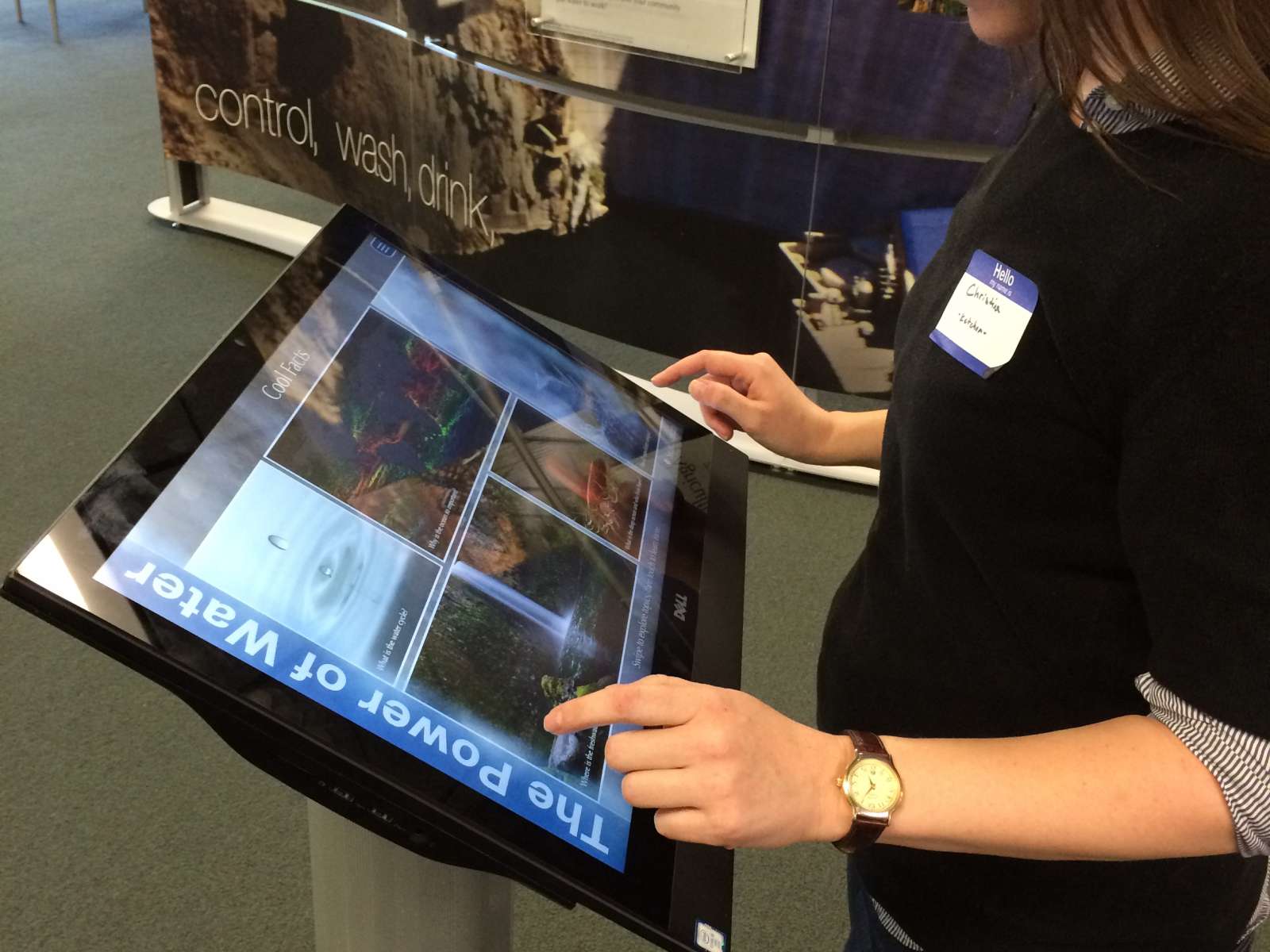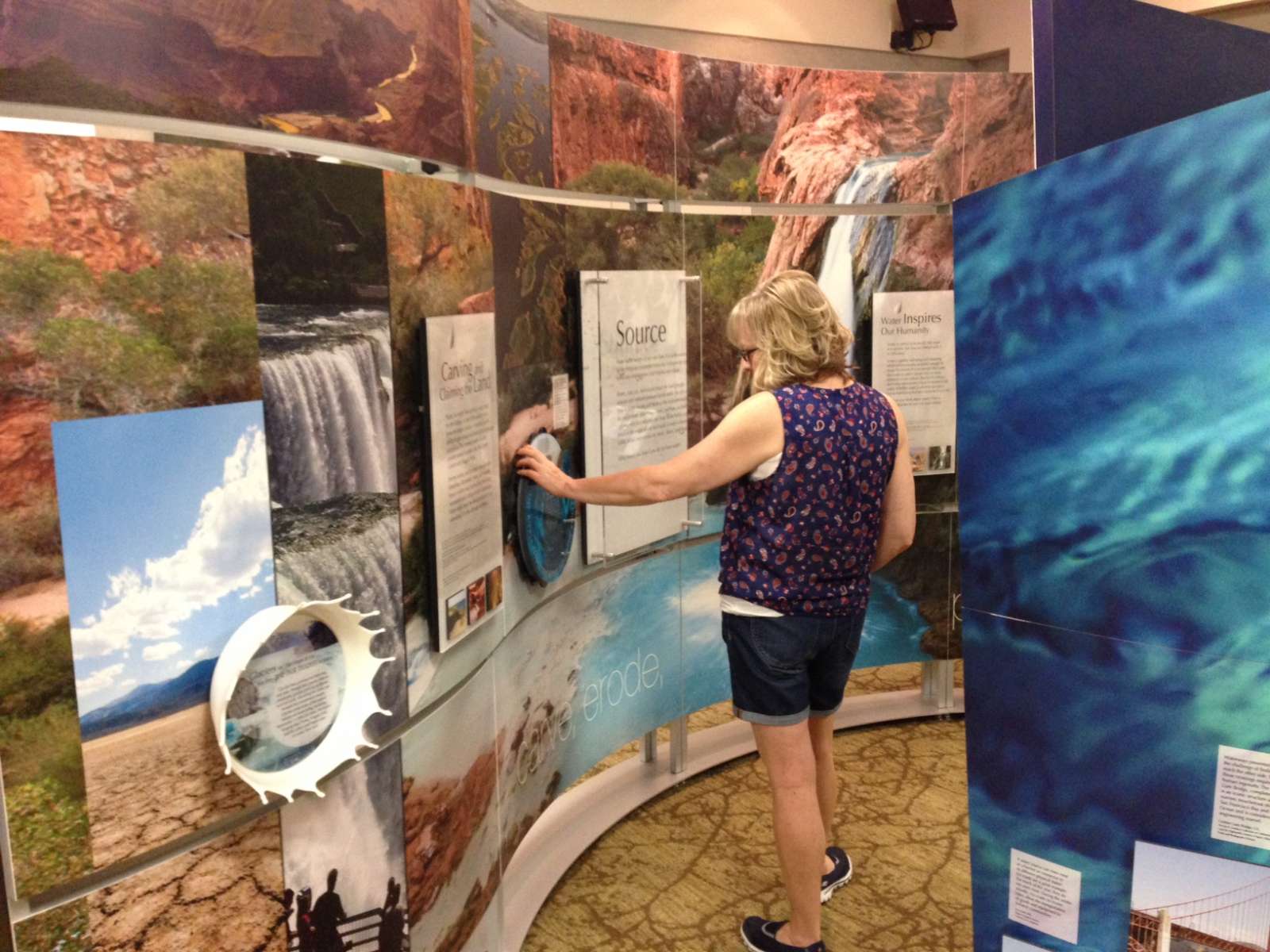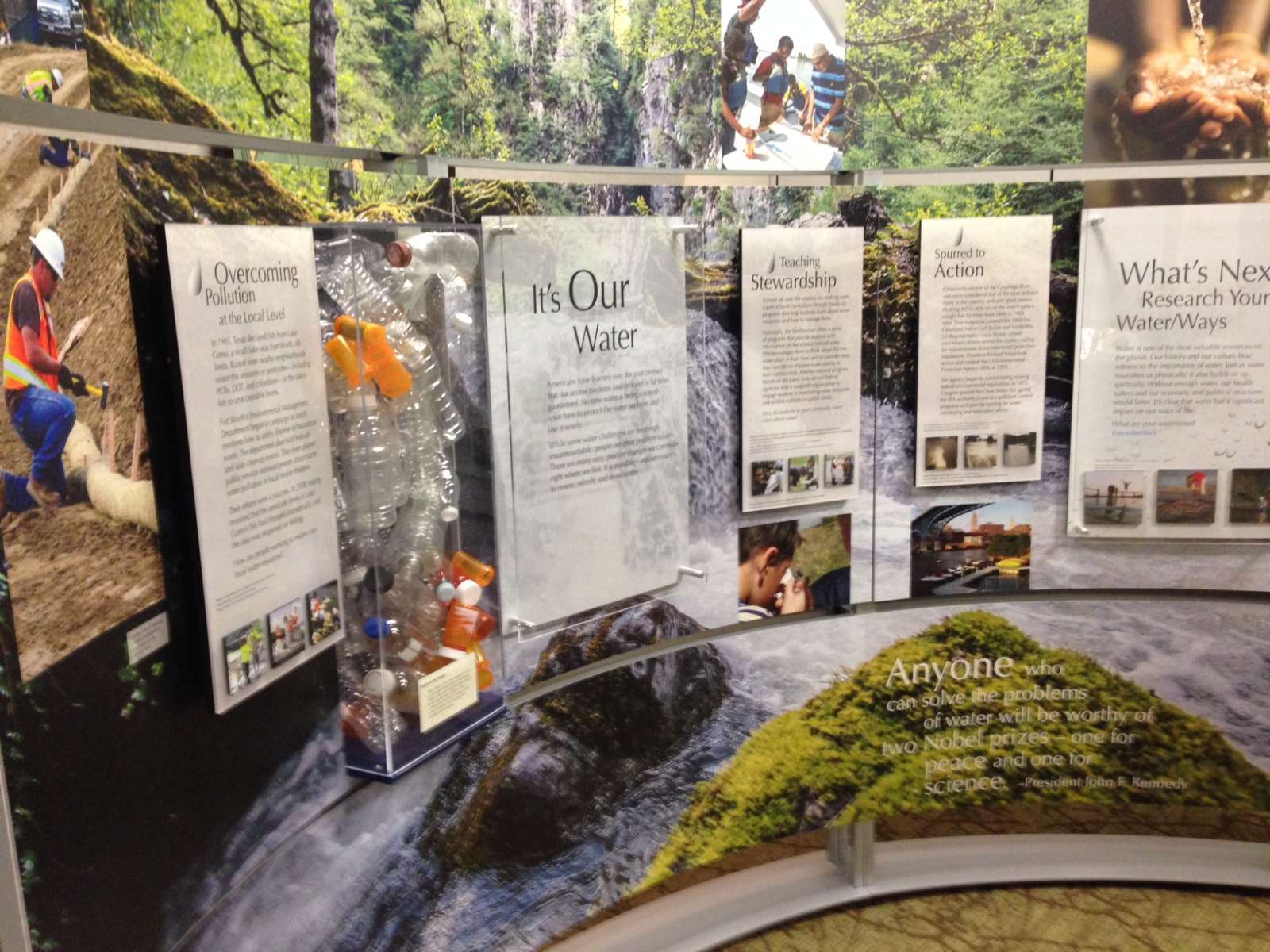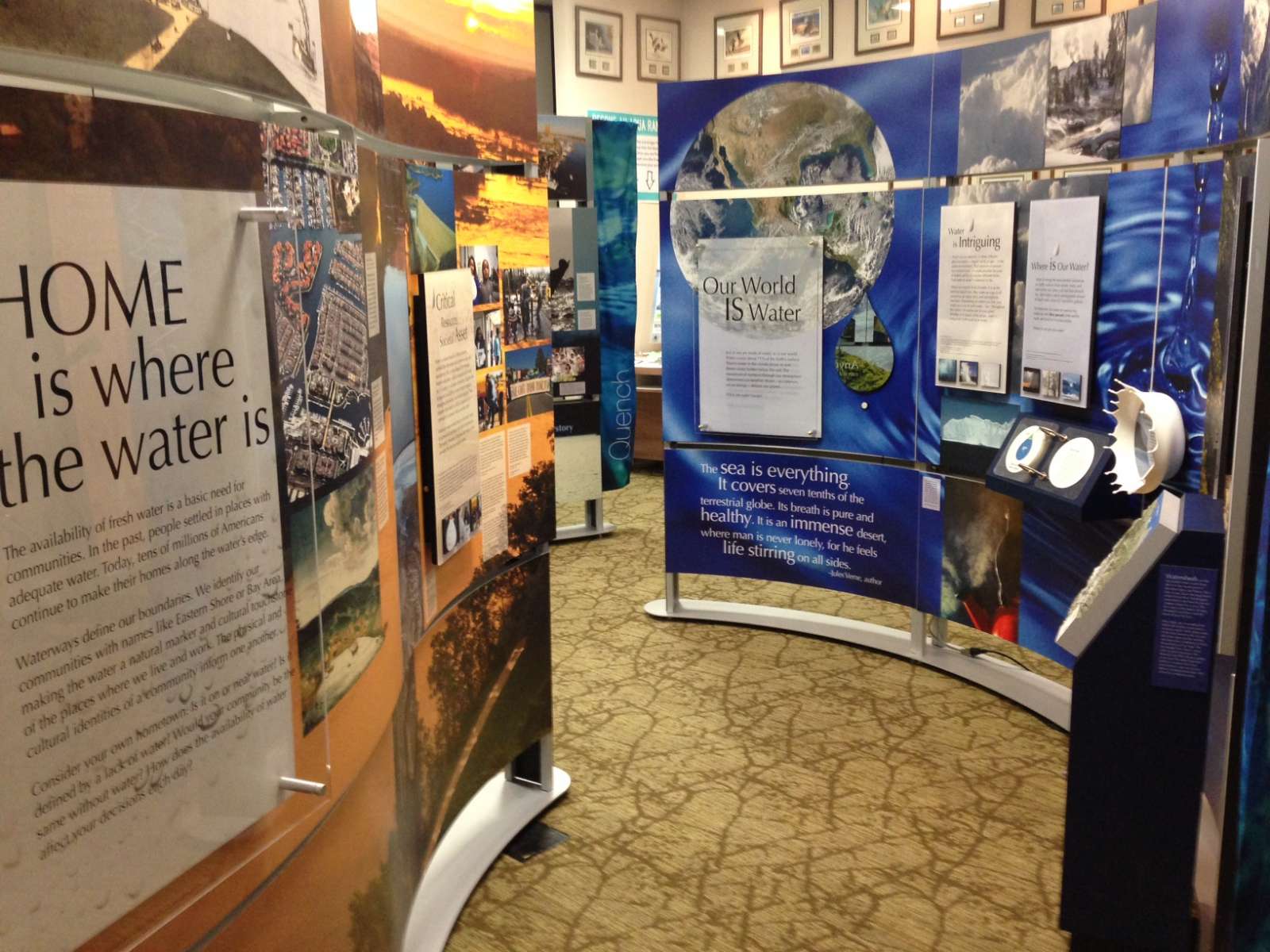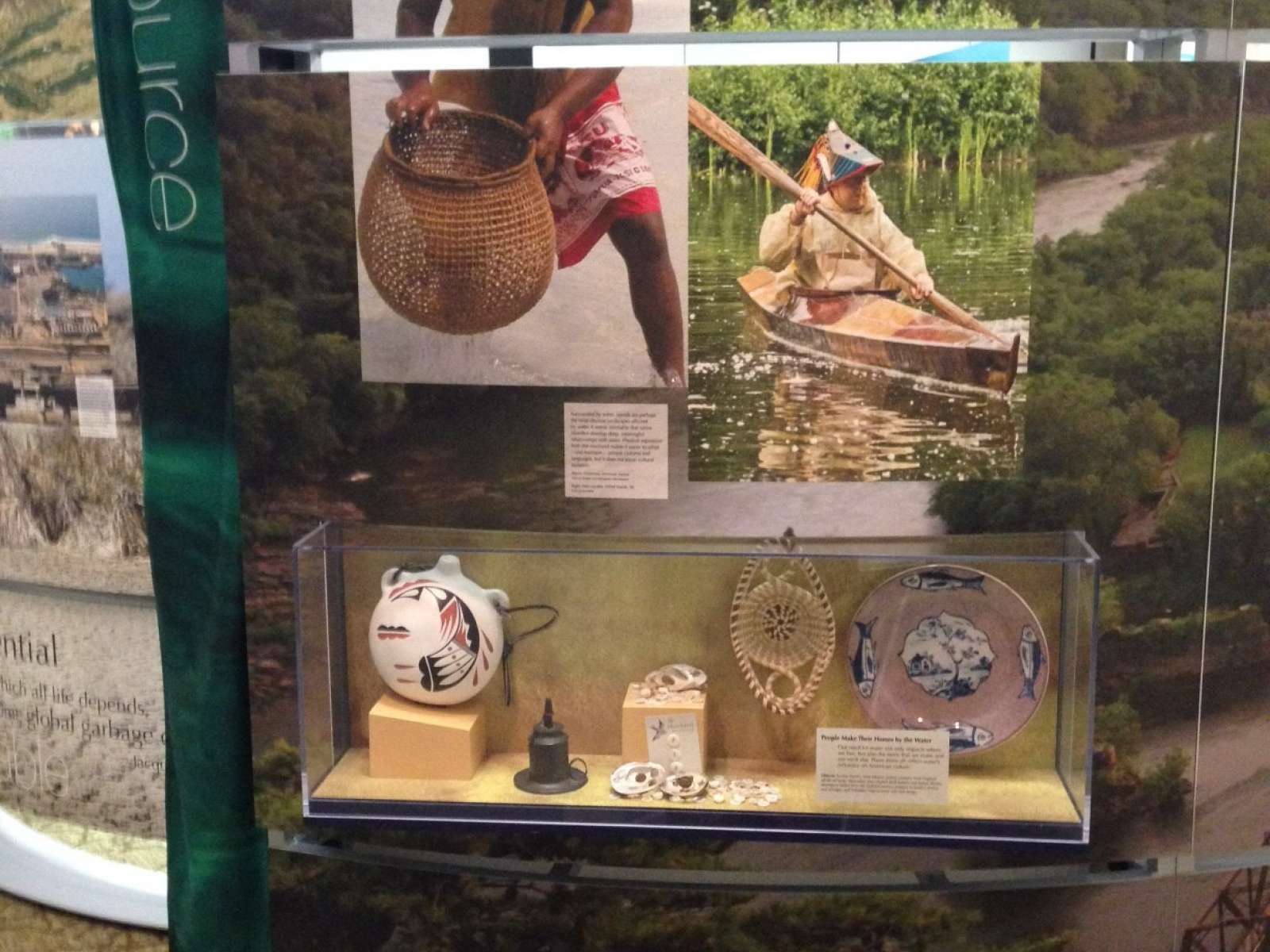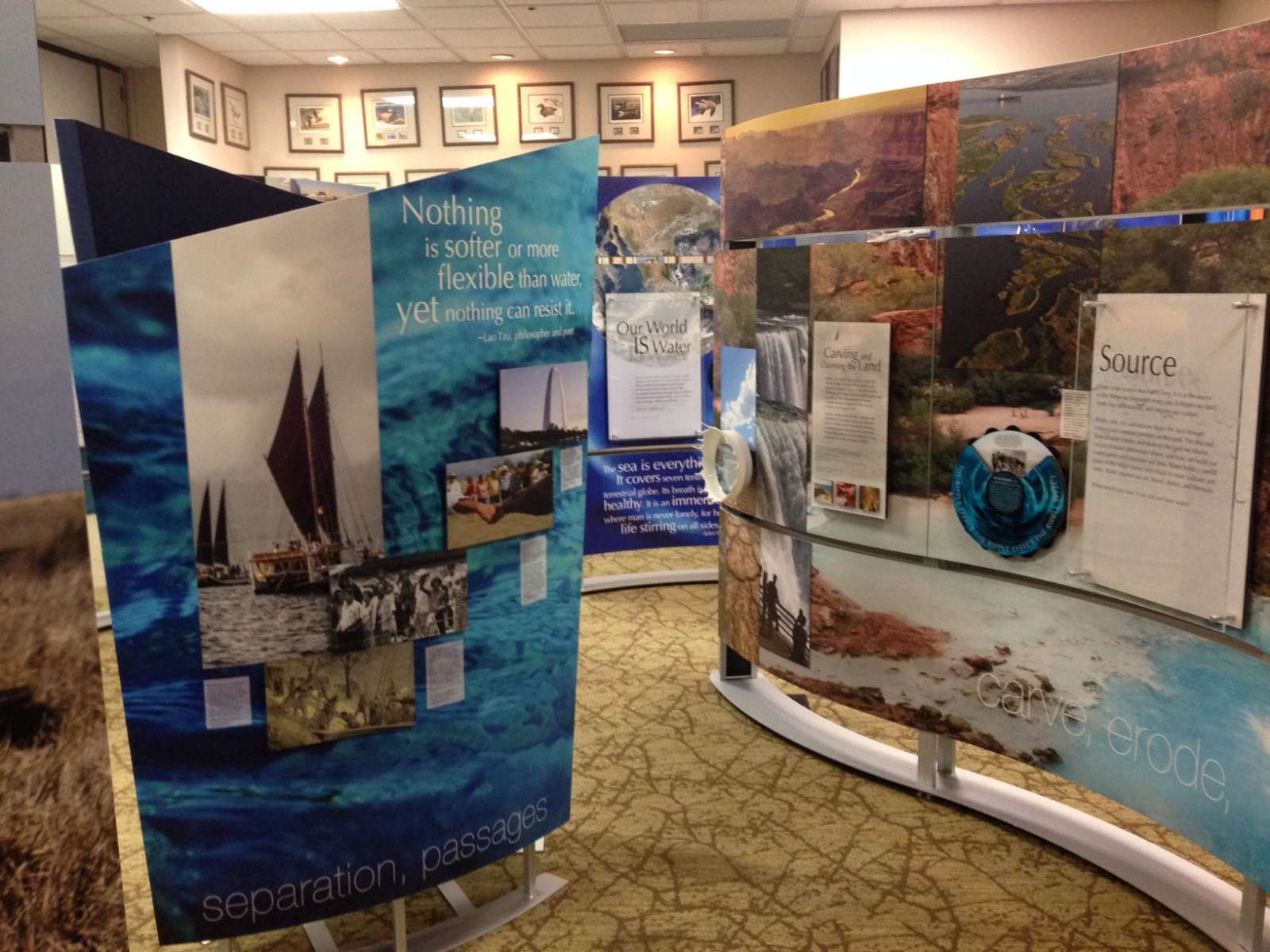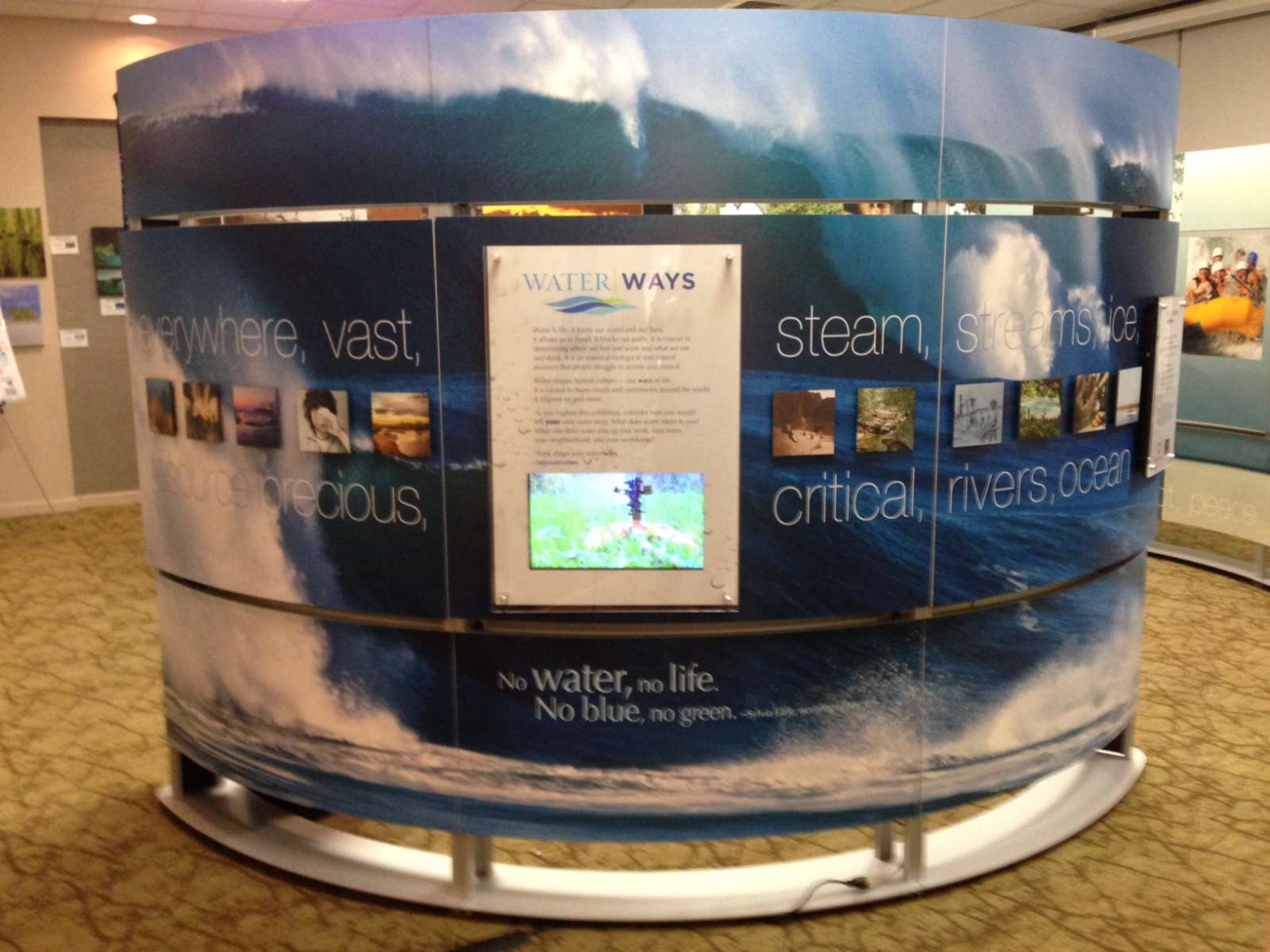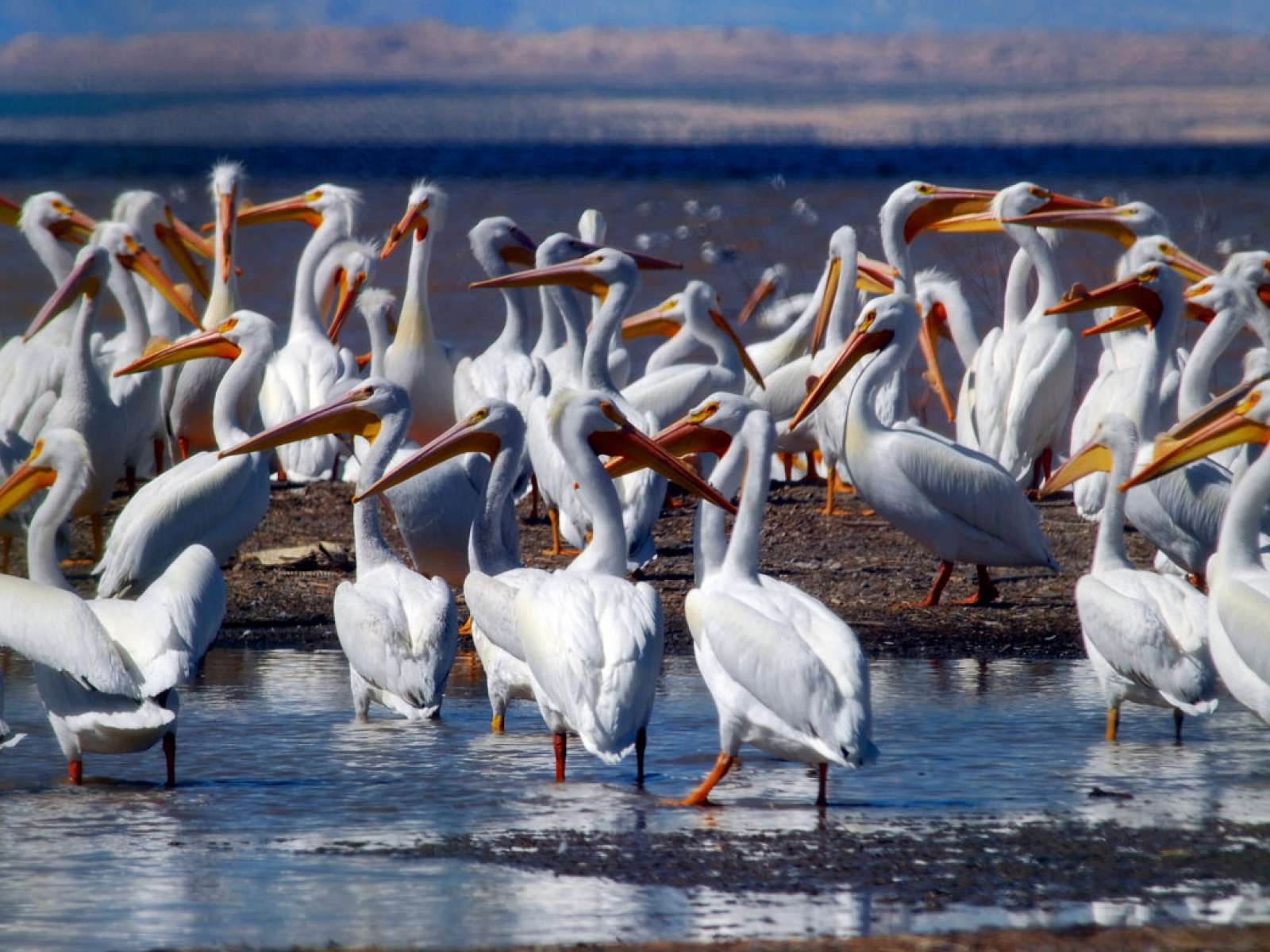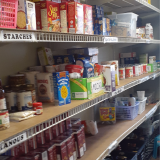Water/Ways
#ThinkWater, #MyWaterStory
The Museum on Main Street tour of Water/Ways ended on December 11, 2022 after visiting 180 small towns across 25 states and Guam. For more information on the Smithsonian Institution Traveling Exhibition Service's ongoing tour of Water/Ways, please visit SITES' website.
The Smithsonian’s Water/Ways exhibition dives into water--an essential component of life on our planet, environmentally, culturally, and historically.
In societies across the globe, water serves as a source of peace and contemplation. Many faiths revere water as a sacred symbol. Authors and artists are inspired by the complex character of water – a substance that is seemingly soft and graceful that is yet a powerful and nearly unstoppable force.
Water also plays a practical role in American society. The availability of water affected settlement and migration patterns. Access to water and control of water resources have long been a central part of political and economic planning. Human creativity and resourcefulness provide new ways of protecting water resources and renewing respect for the natural environment.
Read MoreWhat is ThinkWATER?
Water/Ways and its companion exhibition, H2O Today, are core components of the Smithsonian's thinkWater project. thinkWater offers an opportunity to explore water from both scientific and cultural perspectives through a variety of programmatic opportunities. This unique project combines the two Smithsonian exhibitions with educational activities and digital story-collection initiatives with the deep programmatic expertise of state humanities councils. The project offer the Smithsonian’s state partners an opportunity to feature not just a traveling exhibition, but also a wide array of programs to maximize interest in water. Look for great associated programs when Water/Ways and H2O Today visit your state!
Check out great programs happening in association with the thinkWater initiative. Our periodic newsletter features great articles on the intersections between water and culture. Take a look!
This exhibition remains available through SITES
This exhibition covers many themes, including:
Just as we are made of water, so is our world. Water covers about 71% of the Earth’s surface. There’s water in the clouds above us and there’s water hidden below the soil. The movement of moisture through our atmosphere determines our weather.
Water is among the most plentiful substances on Earth’s surface. From oceans, rivers, and lakes to the rain, snow, and hail that fall each day, Earth holds a nearly unimaginable amount of liquid water: about 327 quintillion gallons.
The adage that someone, somewhere, is always downstream from you is actually true. Everyone lives within a watershed — the surrounding area of land in which water collects and, ultimately, drains into a water source.
Water is often integral to culture. It affects how we interact with the environment around us, where we choose to live, and it is central to many festivals, prayers, and offerings. Water amazes and inspires us as artists, poets, and writers. And, we go to water to have fun! Think about how often we go to the water’s edge for recreation, rest, and relaxation.
The availability of fresh water is a basic need for communities. In the past, people settled in places with adequate water. Today, tens of millions of Americans continue to make their homes along the water’s edge.
Water is a shared resource. It flows between communities; the water used upstream is also used downstream. But it is not always shared equally. Water’s usefulness – and our unquestionable need for it – makes it a valuable commodity. Disputes over access and availability of water happen regularly, throughout the world, our country included. These disputes often lead to a difficult question for a community to answer: Who owns the water?
Humans not only drink water—we put it to work. We search for ways to control water and the energy it possesses. In 2010, Americans withdrew 355 billion gallons of water for use each day. Massive dams don’t just corral our drinking water. They can also generate power. Miles upon miles of canals and irrigation ditches water our crops. We use water to make goods like paper and computer chips, to keep lawns green, and for cooking and cleaning.
Increased global temperatures have a significant impact on the water cycle. Climate change isn’t just about heat – some places will be colder, some hotter. But the overall changes in the climate will lead to new weather patterns and environmental impacts. Scientists predict rises in sea level, rises in sea surface temperatures, and significant loss of glaciers and ice sheets through melting.
Looking For Exhibition Resources?
Visit our Resource Center for Exhibition Guides, Lesson Plans, Scavenger Hunts, Reading List, Docent Handbooks, Free Posters, and more!



